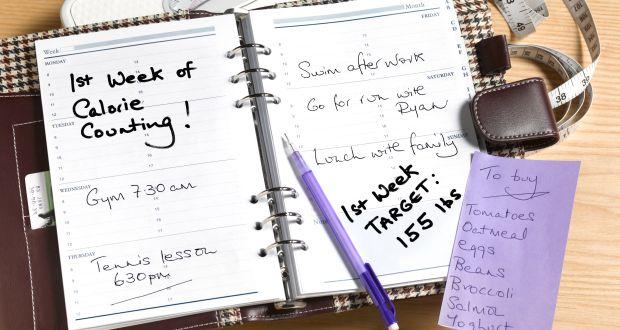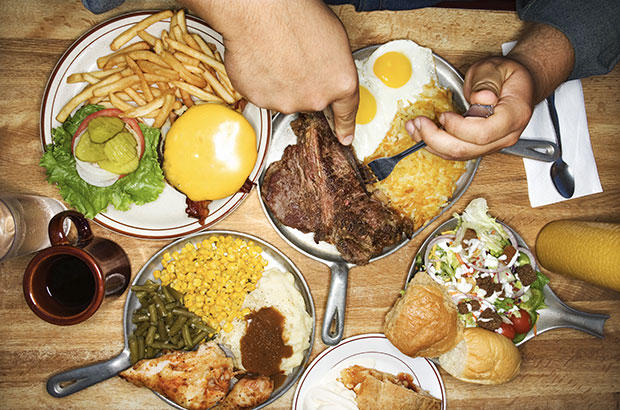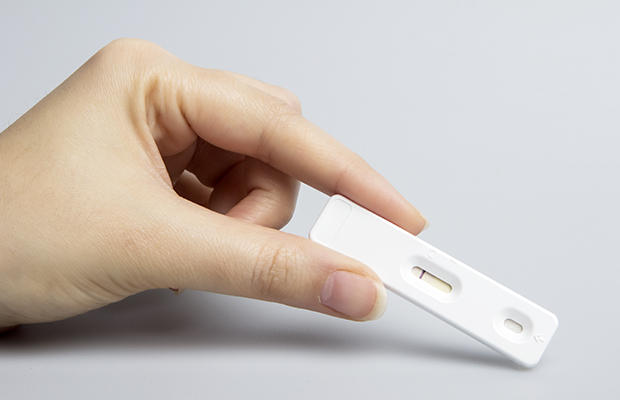How to Set Weight Loss Goals
Losing weight is a common goal for many people. Losing weight and managing a healthy weight can help decrease things like sleep apnea and increased risk for chronic health conditions, increase your energy, and help make you feel better overall. However, many commercially available diet programs are hard to follow or are too expensive. Creating your own weight loss program may be more beneficial since it may be something you're more willing to stick to long-term. Tailor your plan to your lifestyle including what you can afford, what you like or dislike about diets and how often to exercise. Together these components of your diet will help you lose weight.
Steps
Method 1 Planning for Weight Loss
-
1
Go to your doctor. Working with your doctor you can find out exactly how much weight you should be aiming to lose. In addition, your doctor will review any medications or current health conditions you have and determine the safety of weight loss for you.
- Your doctor can also help you determine whether you're physically capable of strenuous exercises and workouts.
- He may also be able to give you some basic tips on calorie counting and decide what will work best for you.
-
2
Set realistic goals. Whenever you're starting any weight loss program (commercial or your own), it's important to start by setting realistic goals for yourself. This will help you determine what type of diet, the length and whether or not you'll need to include physical activity. Goals that are too large or lofty usually lead to discouragement and may cause you to give up.
- In general, it's not recommended to lose more than about one to two pounds per week.[1] This is considered safe, realistic, and sustainable weight loss.
- Diets that promise faster or more weight loss may not be safe and are generally not sustainable for long periods of time. Focus on smaller, more attainable goals.
- If you have a lot of weight to lose, you may want to set multiple goals for yourself. You can have one long-term goal and a few little goals prior to it. For example: Lose 30 pounds in six months as a long-term goal. Short term goals may include: Lose five pounds in two weeks, 10 pounds in four to five weeks, etc.
- Buy or make your own calendar to track your goals. Circle the day you plan to start and end your weight loss program. This way, you'll have a specific deadline to meet which will give you a path to follow.
- You can also denote what days you're going to exercise by marking it on your calendar as well.
- Post your calendar in a spot where you'll always see it and don't forget to do what it says. If it says you have to do cardio, do it.
-
3
Assign yourself a rewards. Setting up exciting rewards may help you stay motivated throughout your weight loss program. Ensure that these rewards are specific, special things you save for when these milestones are achieved.
- Set up smaller rewards for when you meet your smaller, more interim goals. Have a larger, more gratifying reward for when you meet your larger, long-term goals.
- It's generally not recommended to have rewards that are food related — like going out to dinner or having a dessert. Try to pick non-food related rewards like: a manicure, new shoes or a new outfit, a massage, a round of golf at your favorite course, or a new book.
-
4
Plan for lifestyle changes. Whenever you're trying to lose weight, it's typically recommended to ditch the fad diets and instead make long-lasting lifestyle changes.
- Small changes to your diet and lifestyle over a longer period of time has been shown to be easier to maintain. You don't want to make big changes quickly for weight loss. You're less likely to keep them up in the long-term.[2]
- When you're designing your diet, don't go too extreme or follow a program that you know isn't realistic for you. You want to create a diet, eating pattern, or lifestyle that you can follow long-term.
Method 2 Creating Your Weight Loss Plan
-
1
Set your daily calorie limit. Regardless of what weight loss plan you follow, you'll inevitably need to cut out calories to lose weight. Decide what total calorie intake you should be eating each day to help you safely lose one to two pounds per week.
- In general, you'll need to cut out, burn off or do a combination of cutting out and burning 500–750 calories each day to result in that one to two pound weight loss.[3]
- You can start by calculating how many calories you typically eat on a "non-dieting" day. Use a food journal app or online calculators to help you figure out this total. Subtract 500–750 calories from this number to get an idea of what your total daily intake should be.
- There are also some online calculators or apps that can figure out about how many calories you should eat daily for weight loss based on your age, gender, weight, and activity level.
-
2
Measure portions. To help you maintain a lower calorie diet, it will be helpful to stick to appropriate portion sizes for your meals and snacks. Serving yourself or consuming portions that are too large may slow your weight loss.
- Invest in a food scale or a set of measuring cups to help you stay on track. Measure each meal and snack to make sure you're on target.
- Make life easier by finding tupperware, bowls, dishes and cups at home that are a certain portion size. For example, packing your lunch in a tupperware container that is one cup in size.
- Appropriate serving sizes for most foods are as follows: Protein: three to four oz, Fruit: 1/2 cup chopped or one small piece, Vegetables: one cup or two cups leafy greens, and Grains: one oz or 1/2 cup.
-
3
Choose a higher protein or moderate protein diet. Depending on what you choose, you'll need to decide whether you're doing a higher protein diet or moderate protein diet. This is the key to creating a plan that you can stick to without being hungry.
- Some studies have shown that higher protein diets help you lose weight a little faster and help keep it off long-term.[4]
- Eating a source of lean protein at each meal and snack is great for any weight loss plan. You may need to eat more than one serving at each meal if you're following a higher protein diet.
- If you typically feel hungry when you've dieted in the past, consider following a higher protein diet. Increased amounts of protein have been shown to help you stay satisfied longer throughout the day.[5]
-
4
Go for either a low-carb or moderate-carb diet. Diets generally fall into either low-carb or moderate-carb groups. Both have their advantages; choose what will work best for your lifestyle.
- Low-carb diets have been shown to produce quicker weight loss initially compared to a moderate-carb diet.[6] However, in the long-term, both low- and moderate-carbohydrate diets showed very similar weight loss overall.
- Low-carb diets are more restrictive. If this is easy for you to follow and you do not miss carbohydrates, following a low-carb diet might be appropriate for you.
- Some people crave carbs or feel they do better with weight loss when they include a moderate amount of carbohydrates each day. Again, choose what works best for you.
- If you're going to limit carbohydrates, restrict your choices from the grain group first (bread, rice, pasta, crackers, etc). Most of the nutrients from this food group can be consumed from other foods. You may also choose to limit starchy vegetables (legumes, potatoes, winter squash, and peas) if you're following a low-carb diet.[7]
-
5
Emphasize fruits and vegetables in your meals. There are a variety of diet styles to choose from. However, most will emphasize that you eat several servings of fruits and vegetables each day.
- Both fruits and vegetables are low-calorie and very nutrient-dense. They contain a large variety of vitamins, minerals, antioxidants and a good amount of fiber.
- Stick to one to two servings of fruit daily at a maximum. If you're choosing to follow a lower carb diet, you may choose to eat less.[8]
- Aim for about five servings of vegetables each day. Again, if you're following a lower carb diet, you may choose to focus on non-starchy vegetables instead of higher carb vegetables (like potatoes, peas, or carrots).
-
6
Drink hydrating fluids daily. One very important component to all weight loss plans is adequate consumption of water and other hydrating fluids. This will help support general health, but may also help manage your appetite.
- A good rule of thumb to begin with is to drink eight glass of water daily. However, you may need up to 13 glasses daily. This will depend on your gender, weight, and physical activity level.[9]
- Consider purchasing a water bottle to help keep track of your total fluids throughout the day.
-
7
Include regular physical activity. If you're interested in losing weight, you may also want to consider including regular physical activity into your week. Keep in mind that changing your diet and also starting an exercise regimen all at once can be daunting. Try changing one thing at a time.
- Studies have shown that regular activity will help support weight loss and long-term weight maintenance.[10]
- It's recommended to include 150 minutes of aerobic activity each week and two days of about 20 minutes of strength training each week.[11]
- If you haven't been participating in regular physical activity, start slowly. Work up to the recommended amounts of time over a few weeks or months.
-
8
Consider commercial or supervised diets. If you don't want to come up with a diet plan by yourself, you may choose to follow a commercially available or supervised diet program. Or you may choose to base your own diet off of one of these:
- Try low-carb/high-protein diets. Some commercial programs focus on very low-carb and high-protein eating patterns. These may result in quicker weight loss, but are typically hard to follow long-term due to their overly restrictive nature.
- Consider low-fat diets. This particular eating pattern focuses on limiting the fat content of your diet. Specifically, most low-fat diets limit trans and saturated fat but also give you limits for heart healthy fats.[12]
- Follow a Mediterranean-style diet. The Mediterranean diet is an eating pattern that focuses on fruits, vegetables, whole grains, fish, and smaller amounts of animal protein (like beef or poultry). This diet has been shown to be a healthy option for those with cardiac health problems.[13]
- Look into medical weight loss programs. Medically supervised diets are facilitated by doctors and dietitians. They may have you follow a restricted meal plan or use high-protein, low-calorie meal replacements for a short period of time. In addition, they may also use prescription medications and/or vitamin injections and supplements to help suppress appetite and increase energy.
Method 3 Maintaining Weight Loss Long-Term
-
1
Start a food journal. Keeping a journal can be a great component of your weight loss program. It can provide you with the ability to track a variety of factors that may be able to keep you on track long-term.
- Studies show that people who track their food are more likely to stick to their diets and maintain their weight loss long-term.[14] So no matter what diet you end up following, track your food for the best chance of success.
- You can also track your progress as well. Keep a weekly log of your weight and total weight loss.
- Also consider making notes about what's working and what's not working about your diet. When the time comes to reevaluate your diet plan, review your notes and make any necessary changes.
-
2
Reevaluate your plan each month. Whether you follow a commercial diet or your own plan, it's important to reevaluate your progress regularly. This will help you determine if your plan is appropriately working for you.
- Consider your weight loss. Weigh yourself weekly and then tally up how much you've lost over the entire month. If you're doing well, you may choose to continue with your current plan. If you haven't lost much weight, you might need to take a look at your food diary or calorie levels and adjust as needed.
- Also consider how easy your plan has been to follow. Have you been physically satisfied with your meals? Are you feeling hungry throughout the day? Are you having a lot of cravings? Make changes to your dietary intake as needed.
-
3
Build a support group. Find a support group while you're trying to lose weight and when you're trying to maintain your weight loss and healthy lifestyle. Having a support group may help you keep your weight off long-term.
- Many studies show that those people who relied on a support group of either friends, family members or other dieters, were more successful and were able to keep their weight off long-term.[15]
- Talk to your friends, family members or coworkers about your new diet. Ask if they'd be willing to join you.
- You can also find support groups online or find ones that meet in person.
-
Get Fit With These Smart Fitness Tips
TIP! Buying a new, cute outfit to do your workouts in will gi
-
Healthy Weight Loss Tips
There are many people who search for miracle cures to lose weigh
-
Weight Loss Tips That Will Reduce Your Waistline
Weight loss doesnt stop after exercise; focus on losing weight while
-
5 Ways To Drink Green Tea For Weight Loss
I'll admit it: I had a mini celebration when I learned green tea h
-
Look Your Best With These Solid Weight Loss Tips!
TIP! Remember that skipping meals does more harm than good. B
-
Put An End To Yo-Yo Dieting With These Tips
TIP! Eating chunky soups can help you achieve weight loss. It
- DON'T MISS
- A Couple Of Simple And Free Ways To Lose Weight
- Keeping Track Of Calories Can Result In Effective Weight Loss
- 10 Things Every Fit Girl Thinks on Christmas
- 8 Tips To Lose The Last 10 Pounds
- How Can I Lose Weight? Lose Weight Now in 3 Easy Exercises!
- Maintain Radiant, Youthful Skin With These Tips
- Lose 20 Pounds in 30 Days Foods That Burn Fat and Help You Lose Weight
- How to Lose Weight with Coffee
- Losing Weight Is As Simple As Using The Basic Tips That Really Work
- Yoga for Weight Loss




